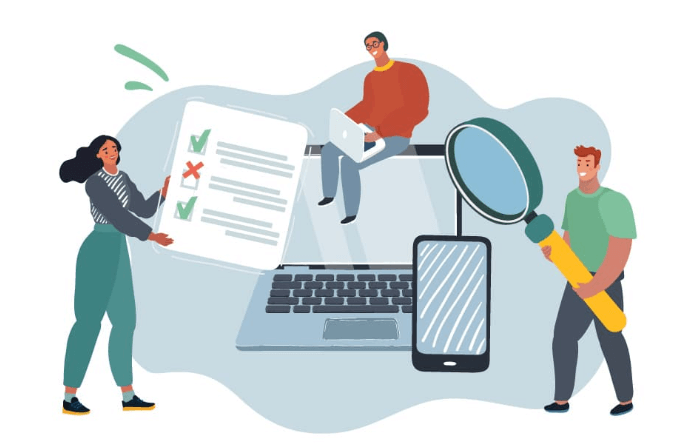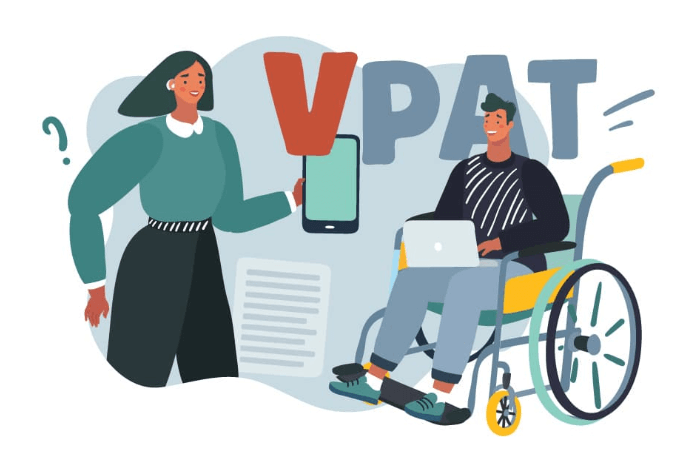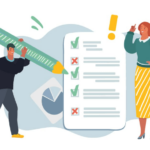The challenges of VPAT compliance has emerged as a vital framework for evaluating and promoting accessibility in products and services.
VPAT compliance serves as a roadmap for organizations to assess the accessibility features and limitations of their digital offerings. Companies that adopt VPAT guidelines show their commitment and offer vital information to potential users, government entities, and procurement officials. However, achieving VPAT compliance is not without its challenges.
Organizations must overcome significant obstacles to ensure their products and services meet the needs of individuals with disabilities. In this article, we will explore the various hurdles that organizations face when navigating the complexities of VPAT compliance. We will delve into the technical, logistical, and legal challenges that arise during the VPAT compliance journey.
Five hurdles organizations face when navigating the complexities of VPAT compliance

When navigating the complexities of VPAT compliance, organizations may face several hurdles. Here are five common challenges that organizations often encounter:
Understanding the Accessibility Guidelines
One of the primary hurdles is gaining a comprehensive understanding of the accessibility guidelines outlined in the VPAT. The guidelines can be complex and technical, requiring organizations to invest time and resources in learning and interpreting them accurately. Without a clear understanding, organizations may struggle to implement the necessary accessibility features and meet the compliance standards.
Integrating Accessibility into Development Processes
Incorporating accessibility into the development lifecycle is a significant challenge for organizations. Often, accessibility considerations are an afterthought or implemented as a retrofit, leading to additional costs and delays. Organizations need to integrate accessibility from the early stages of product development, including design, coding, testing, and quality assurance. This way they can ensure accessibility is ingrained in the process and products are compliant from the start.
Addressing Legacy Systems and Products
Many organizations have existing legacy systems and products that were developed before accessibility standards gained prominence. Retrofitting these systems to meet VPAT compliance can be complex and time-consuming, requiring substantial effort and resources. Organizations face the challenge of balancing accessibility with system functionality, striving to make existing systems accessible without causing disruptions.
Testing and Quality Assurance
Ensuring the accessibility of products and services requires thorough testing and quality assurance processes. Organizations must have the necessary tools, expertise, and resources to conduct comprehensive accessibility testing. They must be able to identify potential issues, and address them effectively. Without robust testing and quality assurance procedures, organizations risk releasing products that do not meet VPAT compliance standards.
Staying Up-to-Date with Changing Standards
Accessibility standards and guidelines are constantly evolving as technology advances and new best practices emerge. Organizations face the challenge of staying updated with accessibility standards, particularly when managing diverse products and services. To maintain compliance, they must stay informed, monitor updates, and adapt processes and technologies as needed.
By recognizing and addressing these hurdles, organizations can navigate the complexities of VPAT compliance more effectively. They can create accessible products and services that cater to the needs of individuals with disabilities.
Five Benefits of VPAT Compliance for Accessibility and Inclusion
The benefits of VPAT compliance extends far beyond mere adherence to regulations. The benefits of VPAT compliance for accessibility and inclusion are wide-ranging and profound. VPAT compliance opens doors to a world where technology becomes an enabler of inclusion. Here are five benefits that highlight the transformative power of VPAT compliance.
Enhanced User Experience
VPAT compliance ensures that digital products and services are designed with accessibility in mind. This leads to a significantly improved user experience for individuals with disabilities.
Promotes Universal Design
VPAT compliance encourages the implementation of universal design principles. The aim is to create products that are accessible to a broad range of users, including those with disabilities.
Drives Innovation
Embracing VPAT compliance challenges organizations to think creatively and develop innovative solutions that address accessibility barriers.
Expands Market Reach
Achieving VPAT compliance opens doors to a larger customer base. By ensuring accessibility, organizations tap into a significant market segment that has specific needs and demands.
Demonstrates Social Responsibility
VPAT compliance reflects an organization’s commitment to social responsibility and inclusivity. By prioritizing accessibility, organizations not only meet legal requirements but also contribute to a more inclusive society.
By embracing accessibility as a core value, organizations can positively impact individuals with disabilities. They can unlock new opportunities, and contribute to a more equitable and inclusive world.
Conclusion
Organizations must navigate VPAT compliance challenges to ensure inclusivity and accessibility in their digital products and services. Throughout this article, we have explored the hurdles organizations commonly face when striving to meet VPAT compliance standards.
From understanding the intricate accessibility guidelines to staying up-to-date with evolving standards, each challenge presents its own set of complexities. However, with careful planning, dedication, and the right strategies, organizations can overcome these hurdles and create an inclusive digital landscape.









